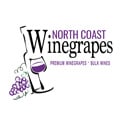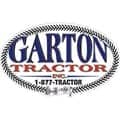Honoring land and history.
Wiley Vineyards straddles a naturally sculpted ridgetop above the fog line ten miles from the Pacific Ocean. Encircled by conifer covered ridges the former homestead exemplifies the beauty and is part of the recent winegrowing history of Anderson Valley.
For Brad Wiley, proprietor of nearly two hundred acres of forest, pasture, with vineyards and fruit trees, history and restoration are as important as farming in this “commercial experiment.”
Wiley purchased the property in 1971 because it was affordable. The beauty and potential inspired him to settle in. Raised in suburban New Jersey, his grandparents on his mother’s side had a farm on eastern Long Island. He remembers hanging out with his grandfather on the tractor, walking around the potato and lima bean fields and going into the village to chat with neighbors.
“I inherited a sensibility for small farming and fascination for the ways, warp and woof of small communities,” says Wiley, whose family started John Wiley & Sons, a global publishing company, 200 years ago. “I’m sixth generation,” says the onetime hippie who still spends time annually on the east coast in the family business.
His upbringing in New Jersey included a wine connection. His best friend was Mario Mancusi-Ungaro. Mancusi-Ungaro’s family had been buying grapes right out of the freight cars in the PA RR Ironbound Newark rail yards from Californiasince the beginning of Prohibition. In 1968 Wiley and Mancusi took a grape purchasing trip to Ukiah. They met John Parducci who had accompanied his family’s grapes and grapejuice to New York and New Jersey from the age of 14 and throughout Prohibition.
“John took us to a Lion’s Club luncheon at Fjord’s Smorgette,” remembers Wiley. The long-haired Wiley was called a hippie by one of the Lions, who was then surprised to find out Wiley knew the names of Italian American grapegrowers on the ridges above Anderson Valley such as Zeni, Pronsolini and Ciapusci.
The day I met up with Wiley he was on his way to a ram sale in Healdsburg with one of his neighbors whose grandfather settled in Anderson Valley in the 1870s. Wiley is considering getting back into sheep raising. He has four ewes, down from a huge flock he accumulated in the late 1970s and early eighties.
The abandoned ranch with elevations from 550 to 1400 feet had remnants of its previous owners. The first Europeans to settle here was the Colson family who came in the 1870s under the Homestead Act. The Colsons like the other early European settlers cleared the redwoods to make room for grazing and for planting crops. They were followed by the Ingram and Guntly families. Wiley removed the falling down apple and other fruit trees which were too far gone to save. “This is a sweet spot for growing and has a good source of water,” he says as we gaze out at the surrounding layered ridges cascading into Anderson Valley.
Coming from academia in the 1970s Wiley had to figure out how to farm the ridgetop property so close to the ocean and make a living. In the early 1970s, people interested in growing grapes and making wine were rediscovering Anderson Valley, which had had a small winemaking tradition fostered by early Italian immigrants who kept it going through Prohibition. Tony Husch, one of Anderson Valley’s new wine pioneers, was Wiley’s realtor and made the idea of a vineyard compelling.
Wiley read textbooks about grapegrowing. He met the thenCounty Agricultural Extension Service Advisor Bruce Bearden and decided to plant his first vineyards. He chose Chardonnay because it was “high profile and a high priced varietal.” Wiley was the third or fourth of the new generation of grape growers in Andreson Valley. He planted grapes just after Edmeades and Husch and before Hans Kobler at Lazy Creek and Ted Bennett at Navarro Vineyards.
When he couldn’t get the Chardonnay to ripen to a level for varietal wine he found a home for it in sparkling wine at Napa Valley’s prestigious Schramsberg winery. “Mine is the coolest vineyard around here but that is only part of the story,” says Wiley. “The temperature is three and a half degrees cooler than four miles away at Husch. The fog often gets stuck right here and while the nighttime temperature on Greenwood Ridge averages from 62 to 66 degrees, mine is 52 degrees.
While the vineyards grew Wiley did seasonal work to make ends meet. He pulled green chain at the Philo saw mill. He planted trees for Masonite. He and friends and neighbors started a local publication called The Advocate. And he and a friend John Dash(among others) formed a vineyard management company to help weekend vacation homeowners who wanted to put in grapes. In 1976, he recommended and helped plant some of Navarro Vineyard’s first Pinot Noir vineyardsblocks. He and his late wife Earlene Merriman partnered in Edmeades for a while. In 1980 Wiley built a redwood home next to the vineyard from timber milled off the property.
In 1988 Wiley took a hiatus from full time farming and went back east to work as an editor in the family’s publishing business, spending summers at the ranch to tend and harvest the grapes. He had to give up his herd of 100 sheep. “I couldn’t fight the coyotes from New York City,” he laments. Since 2002 he is back nearly full time at the ranch, where he has added redwood forest restoration to his duties.
Ten years ago, when Wiley realized that most of the trees growing back from the old redwood logging days are Douglas Fir he went on a tree planting binge. He plants five acre blocks on the hillsides and in open spaces. “I want to restore the redwood forest and take back the terrain from the Douglas Fir and hardwood trees,” he says, fully cognizant that this is not a one-generation project. “It will take a hundred years to reach my goal,” he says.
These days, Wiley is focused on continuing to build an economically viable and sustainable farm with grapes as a commercial crop, sheep to help keep the grass down and a restored redwood forest that will only be harvested every 50 to 100 years.
He has 20 acres of Pinot Noir and about two acres each planted to Riesling and Pinot Gris. The original Chardonnay is gone. He has been selling them to a variety of wineries including Drew, Phillips Hill, Woodenhead, Shramsberg, Breggo, S. Harrington Wines and a new winery being started by Paul Ardzooni in Philo
Following in the footsteps of his homesteading predecessors the Colson-Ingram-Guntly and now Wiley ranch in Anderson Valley is evolving. Like his fellow adventurers in the 1970s, Wiley started his own venture planting grapes. Sheep naturally followed and now he is interested in restoring the forests that those who came before him decimated.
“I want to get a balance between the sheep, forestry and vineyards,” says Wiley. “I like improving upon all that comes from successive trial and error–the history, the commercial experiment that is the farm, and the forestry restoration.”
















































